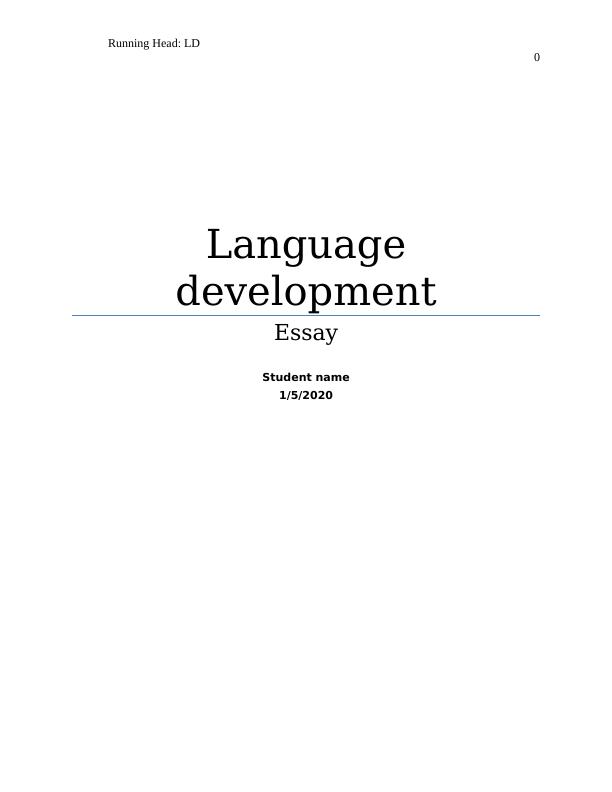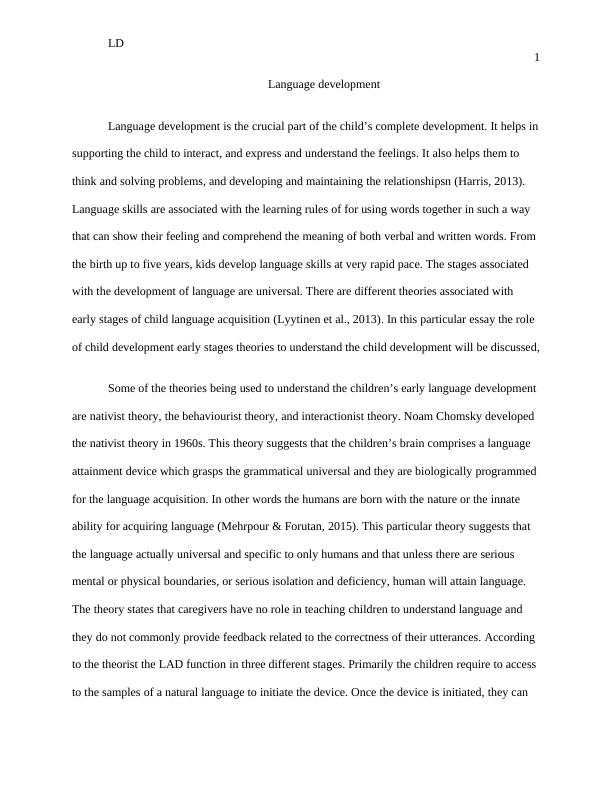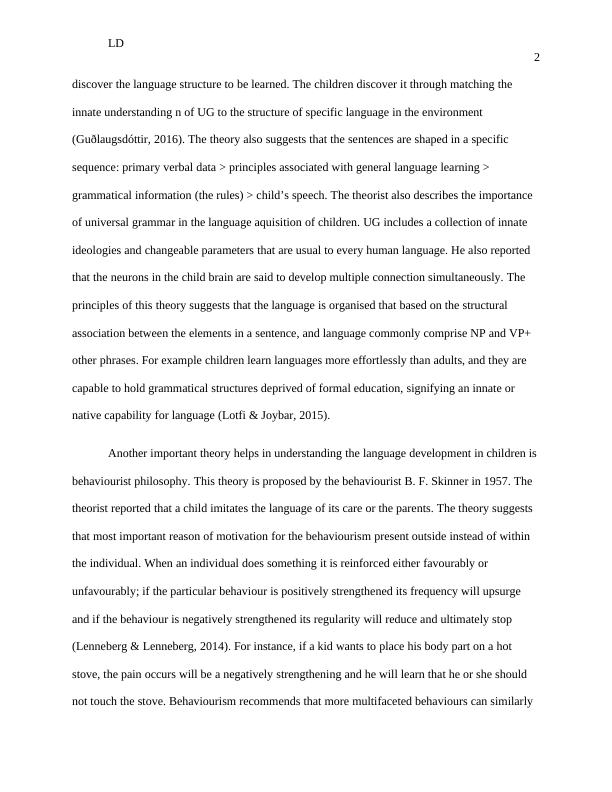Language Development Essay 2022
Write an essay explaining how children's language development can be understood by drawing on the theories of the early stages of language acquisition and development (nativist theory, behaviourist theory, and interactionist theory).
7 Pages1670 Words34 Views
Added on 2022-08-31
Language Development Essay 2022
Write an essay explaining how children's language development can be understood by drawing on the theories of the early stages of language acquisition and development (nativist theory, behaviourist theory, and interactionist theory).
Added on 2022-08-31
ShareRelated Documents
End of preview
Want to access all the pages? Upload your documents or become a member.
Early Stages of Language Acquisition and Development
|6
|1607
|432
Language and Literacy Assignment
|7
|1530
|100
First Language | Presentation
|5
|1486
|11
Language Development Assignment
|4
|1478
|979
Nursing Learning and its Theories 2022
|10
|2280
|15
Language Acquisition in Children: Nativist, Interactionist, and Behaviorist Theories
|7
|1797
|311



